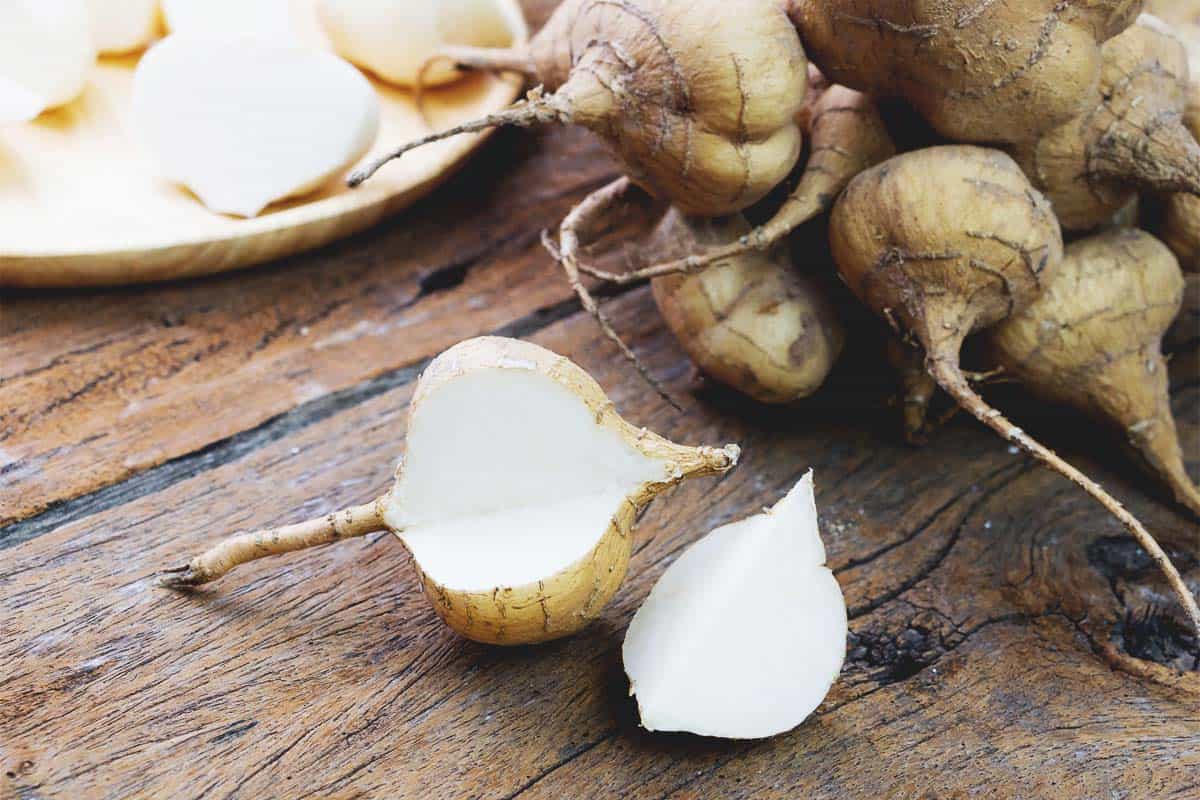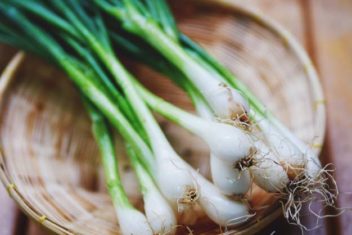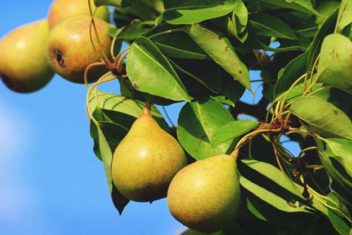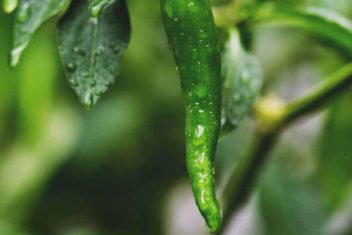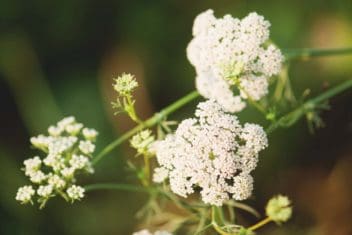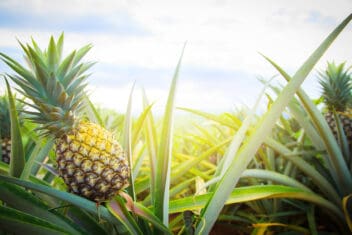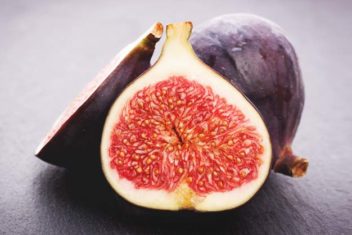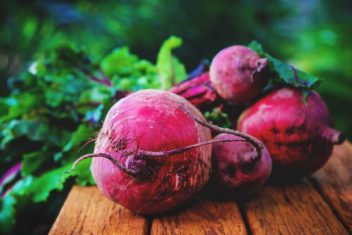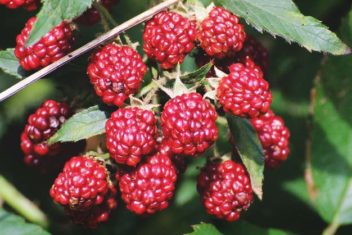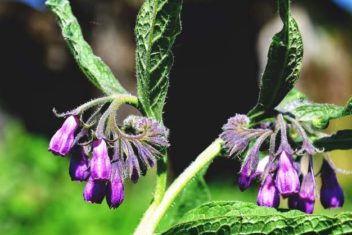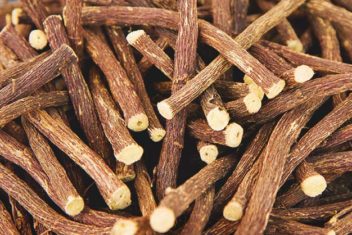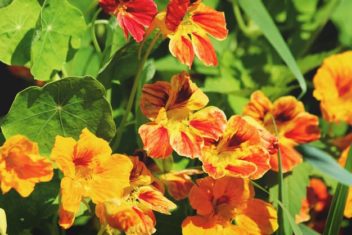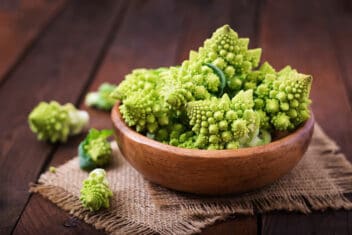I first tried jicama during my meal kit box days. While I didn’t keep the meal kits in my life, jicama has become a must-have for growing in my garden. Most people usually nibble on the refreshing veg sliced raw, but its way more versatile in the kitchen than you may realize.
Jicama is a crunchy vegetable that’s reminiscent of a radish but with a way milder flavor profile. The tuber-like veg is a relative of the bean family and comes from Central America – specifically Mexico.
It grows much like a potato but with quick-growing vines instead of upright foliage. Like the humble potato, all non-tuber parts of the plant are poisonous and non-edible.
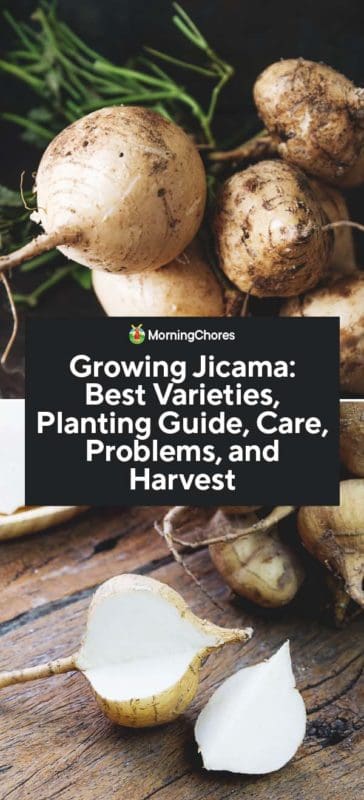
Jicama Varieties
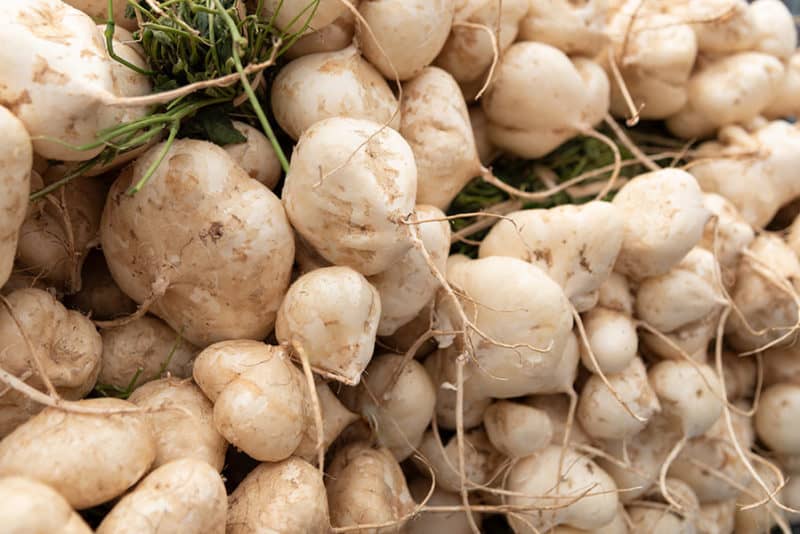
There are two primary varieties of jicama:
- Pachyrhizus erosus: produces smaller tubers with an oblong shape.
- Pachyrhizus tuberosus: larger than the erosus variety and usually consumed raw.
Planting Jicama
Is jicama challenging to grow? The answer depends entirely on where you’re growing it. It flourishes in warm regions with a long growing season.
It takes a while for a jicama plant to produce tubers and mature – over 150 days. So it’s not ideal for areas with a short growing season. The plants grow well in a garden bed, raised bed, or container.
Growing Zones
Grow jicama in zones 7-10.
Sun Requirements
Jicama is native to Mexico and prefers plenty of sunlight. The amount of sunlight a jicama plant receives is vital because, like potatoes, it’s daylight sensitive.
Planting at the wrong time may limit your harvest. Those with short summers will likely need to cover and protect jicama plants to prevent frost damage and enable a proper harvest.
Soil Requirements
Select a location with rich, fertile, well-draining soil with a pH above 7.0. This vegetable is a heavy feeder, so work in plenty of well-rotted manure into the soil before planting.
Starting Seeds
You’re unlikely to find jicama seedlings anywhere for sale, so you’ll have to start them from seed or tubers.
Start seeds at least 8-10 weeks before the last frost date in your area. Use a heat mat indoors to encourage germination since jicama seeds like warm soil.
In warmer climates, seed can be direct sown in the spring or all year round if no frost is expected. Soaking the seeds can increase the chances of germination.
Starting Tubers
If you leave tubers in the ground from the current growing year, they’ll sprout once again next spring, similar to Jerusalem artichokes.
Transplanting
Give plants about a week to harden off before putting them in the ground. Plant jicama starts when all danger of frost has passed and the soil is at least 50°F.
Spacing and Support
Jicama plants should be spaced at least 8 inches apart from one another. The vining plant will topple over without support, so you can use some sort of structure to handle the vines.
If you want to let the spread along the ground, feel free. In that case, give them 24-inches between plants.
Caring for Jicama
Watering
Keep well watered and don’t let the soil dry out. Jicama needs plenty of water.
Weeding
Remove weeds immediately to prevent competition, but be careful not to disturb the growing roots.
Fertilizing
Fertilize jicama plants once a month up until harvest using a high-nitrogen fertilizer. Jicama is a hungry plant.
Pruning
Some gardeners say that plucking flowers from the jicama plant encourages tuber growth. It may be worth a try to see if it improves your harvest. Don’t let the plant go to seed.
Problems and Solutions for Growing Jicama
Jicama is mostly a problem-free plant. The toughest challenge with growing jicama is being able to have enough patience to wait for the tuber to mature. Don’t dig into the ground and disrupt growth! Protect the plant from frost and get your timing right, and you’re likely to succeed.
Weevils
Weevils may be attracted to jicama plants, but they rarely pose a serious problem. Pick any weevils you see and drown them in soapy water.
Fungal Diseases
Jicama can be impacted by fungal diseases. A general rule is to water at the base of plants, keep plants well-spaced, and water in the morning so plants have time to dry out. You can also use a fungicide if things don’t improve.
Bacterial Blight
If you see small, water-soaked spots on the underside of your growing jicama leaves, you might have bacterial blight. The best way to avoid it is to prevent water from spreading, so don’t use spray irrigatio and water at the base of plants instead. Also, don’t walk through your garden if the soil is wet.
To control it, use a copper-based spray.
Best and Worst Companion Plants for Jicama
The space-hungry vining plant is best planted apart from others so that its vines don’t interfere with other garden crops. One seed company suggests growing jicama with corn as a companion and support structure.
Other good options include beans, sunflowers, ginger, and cilantro.
Don’t plant jicama with potatoes or tomatoes.
Harvesting Jicama
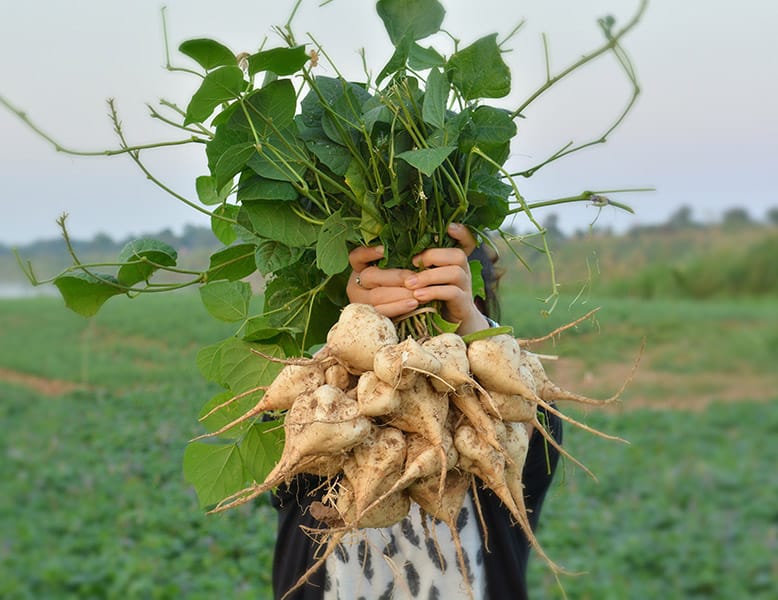
If you’ve ever grown potatoes, you know that it’s time to harvest when the foliage starts to brown and die back. The same is true for jicama plants. Mature tubers should reach about 4-6 inches in diameter.
As with potatoes, dig gently to prevent knicking and damaging the tubers. Note that tubers are usually smaller when grown in colder regions because they have less time to develop.
Don’t try harvesting before the plant has completely died back. You’ll end up with super small or non-existent tubers.
Don’t wash the tubers with water if putting them in storage. Moisture encourages mold growth. Wash only when you’re ready to cook with the tubers. Store them as you would potatoes. The location should be cool and dry.
Cooking with Jicama
Isn’t it amazing that vegetables taste great and that they’re also filled with nutrients? Jicama is no exception. The tuber is high in potassium and filled with loads of vitamin C.
When I cooked with jicama for the first time, it was to make a slaw as a side for a gourmet burger. I ended up slapping the slaw directly on the burger because I loved it so much. Jicama tastes excellent raw in salad-form and pairs well with carrots, apples, and celery.
Jicama can also be added to stir-fries for extra texture. Cut up jicama sticks make a great snack. The root can be mashed and roasted, too.
Note that the skin should be removed prior to eating jicama. It’s not edible.
Recipes
Here are a few recipes to try when you finally get your hands on your freshly harvested jicama:
I love roasting vegetables, and if you do too, you should consider roasting jicama, as well. This sweet and hot roasted jicama recipe from Fine Cooking uses hot sauce to add a kick to crunchy jicama. Roasting the tuber brings out its inherently sweet flavor.
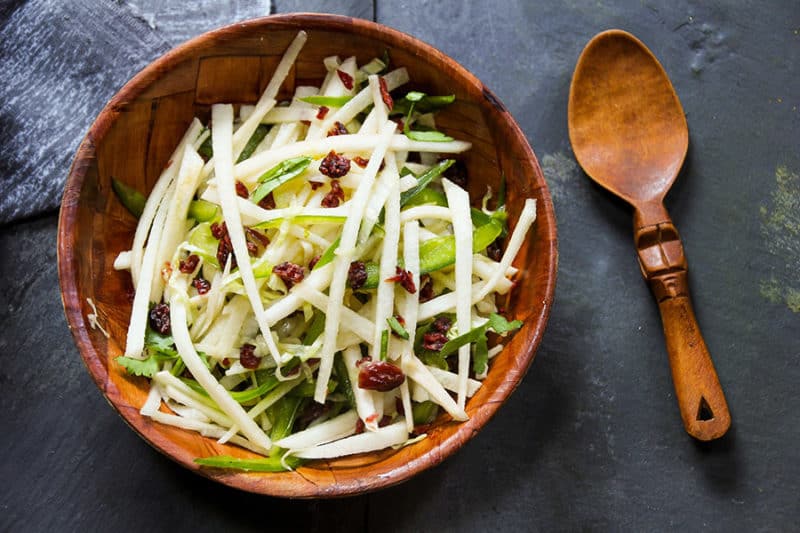
Is there any salad with avocado that doesn’t taste delicious? This recipe from Food & Wine adds crunchy jicama to bring the salad up a notch and boom you’ve got a crowd-pleasing summer BBQ treat on your hands.
Jicama slaw is one of my favorite side dishes. It’s so versatile and easy to customize. Use carrots, cabbage, cucumbers, kohlrabi, or jicama to liven up an otherwise dull plate. My favorite way to use slaw is to top a burger with it. This slaw is tangy, sweet, and crunchy, just the way it should be.
I have nothing against potato-based fries. Eat them up! I just had sweet potato fries with dinner, and they were so so tasty. But when you’re a bit bored of the regular ole’ fry and can’t be bothered to alter the seasoning or cooking method, try using jicama to create a new spin on the traditional french fry.
The Bottom Line on Growing Jicama
For such an easy to grow and versatile veggie, jicama doesn’t get the attention it deserves. I say, try growing jicama in your garden and you’ll never want to be without. Let us know your favorite way to prep this tasty tuber.
